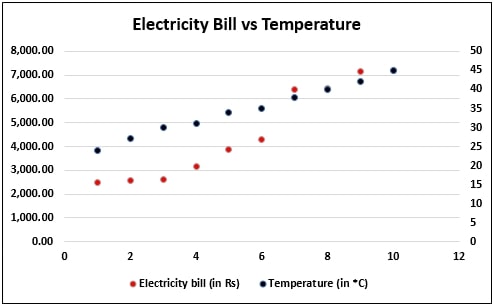
Correlation scatter plot meaning Pc#

The correlations are shown in the following "Component Pattern Profiles" plot. To some extent, you can guess the sign and the approximate magnitude of the correlations by looking at the coefficients that define each PC as a linear combination of the original variables. The profile plot shows the correlations between each PC and the original variables. This suggests that you should retain the first two PCs, and that a projection of the data onto the first to PCs will give you a good way to visualize the data in a low-dimensional linear subspace. In the scree plot for the iris data, you can see (on the "Variance Explained" plot) that the first two eigenvalues explain about 96% of the variance in the four-dimensional data.

You can use the scree plot as a graphical tool to help you choose how many PCs to retain.

(If you use the COV option, it is a plot of the eigenvalues of the covariance matrix.) The scree plot is a line plot of the eigenvalues of the correlation matrix, ordered from largest to smallest. You can therefore to "reduce the dimension" by choosing a small number of principal components to retain. Recall that the main idea behind principal component analysis (PCA) is that most of the variance in high-dimensional data can be captured in a lower-dimensional subspace that is spanned by the first few principal components. You could present this table graphically by creating a "loadings plot,"Īs shown in the last section of this article.
Correlation scatter plot meaning software#
If you compare PCs from two different software packages, you might notice that a PC from one package is the negative of the same PC from another package. Note that the principal components (which are based on eigenvectors of the correlation matrix) are not unique. The fourth PC is a weighted contrast between the SepalWidth and PetalLength variables (with positive coefficients) and the SepalLength and PetalWidth variables (with negative coefficients).In a similar way, the third PC is primarily a weighted contrast between the SepalLength and PetalWidth variables, with smaller contributions from the other variables.You can interpret this weighted sum as a vector that points mostly in the direction of the SepalWidth variable but has a small component in the direction of the SepalLength variable. Is approximately PC2 ≈ 0.38*SepalLength + 0.92*SepalWidth. For the second PC, the coefficients for the PetalLength and PetalWidth variables are very small.You can interpret this as a contrast between the SepalWidth variable and an equally weighted sum of the other variables. The first PC is the linear combination PC1 = 0.52*SepalLength – 0.27*SepalWidth + 0.58*PetalLength + 0.56*PetalWidth.

The linear coefficients for the PCs (sometimes called the "loadings") are shown in the columns of the Eigenvectors table. The principal components are linear combinations of the original data variables.īefore we discuss the graph, let's identify the principal components and interpret their relationship to the original variables. Ods output Eigenvectors=EV /* to create loadings plot, output this table */ run ID id /* use blank ID to avoid labeling by obs number */ Var SepalLength SepalWidth PetalLength PetalWidth /* or use _NUMERIC_ */ Out=PCOut /* only needed to demonstate corr(PC, orig vars) */ Proc princomp data=iris /* use N= option to specify number of PCs */ STD /* optional: stdize PC scores to unit variance */


 0 kommentar(er)
0 kommentar(er)
